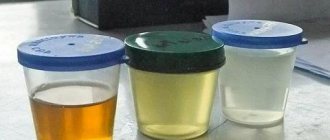Can teeth be cut at 3 months?
The first year of a child's life becomes the most exciting for parents. Joyful moments in the form of the first turn on the stomach, holding the head independently can be replaced by alarming signs. An exciting stage at this time is the process of teething.
At this point, the child sleeps poorly, refuses food and becomes anxious. The timing of the appearance of the first tooth can vary and the beginning of the process at 3 months is not an exceptional case, much less a pathology.
Norm or pathology
Can teeth be cut at 3 months? The earliest age for the eruption of the first elements is considered to be three months of age. Dentists consider it normal for the first teeth to appear at 3 months of age. If the incisors appear earlier than the expected period, then the child should be shown to a therapist. The early appearance of elements on the surface of the gums may signal hormonal disruptions occurring in the body.
The appearance of baby teeth on the surface is accompanied by a number of distinctive symptoms:
- Pain in the gums. Because of this, the child puts fists and foreign objects into his mouth. At this moment, it is important for adults to ensure that there are no small toys or objects near the child that could get into the respiratory tract.
- Deterioration of the oral cavity. The gums swell and redden, becoming more sensitive to external irritants. In some cases, due to teething, the child may experience slight redness of the throat.
- Irritability and increased tearfulness of the baby. The symptom is associated with constant pain in the area of the eruption of the element. At this moment, children become more active and faster.
- Disorders of the digestive tract, manifested by loose stools, regurgitation, and rare bouts of vomiting.
- Temperature increase. The symptom is due to the fact that when teething, the newborn’s body is vulnerable to bacterial and viral pathogens.
We invite you to read: When do wisdom teeth grow? At what age do wisdom teeth usually grow in?
When should teeth start cutting?
It is difficult to determine the timing of the appearance of the first teeth. The course of the process depends on many factors and even on the age of the parents at the time of conception. Climate plays an important role, and even the season when a child is born.
The reasons for early teething may be the following:
- hereditary predisposition;
- excess calcium in the newborn’s body;
- enhanced functioning of the endocrine system;
- the presence of a growing tumor in the tissues of the jaw, which pushes the milk bladder out during the process of growth.
It is worth noting that teething at 3 months rarely indicates the presence of pathology. In some cases, children may develop teeth in the womb or a few weeks after birth.
Late eruption: causes and consequences
Quite often in conversation you can hear that the later teeth start to come in, the stronger they are. In fact, age does not play any role here. The speed of eruption can be affected by circumstances such as:
- Malfunctions of the endocrine system;
- rickets;
- disorders associated with diet and the functioning of the digestive system;
- premature birth;
- heredity;
- infectious diseases.
In the case when a baby who has already celebrated his first birthday does not want to erupt teeth, it is necessary to make a scheduled visit to the dentist. Most often, late teething is a type of norm, but sometimes a small organism simply does not have enough minerals for the full development of the dental system.
In what order do teeth appear?
The schedule for the appearance of teeth is individual and it is difficult and impossible to clearly define the boundaries of eruption. In some children, the first tooth appears after a year, and sometimes teething occurs at the age of 2-3 months. There is no point in talking about pathology - this is an individual feature.
The eruption schedule can be presented as follows:
- at the age of 5 to 7 months, the baby develops two front incisors;
- at 8-10 months the upper incisors appear;
- after eleven months, the lateral incisors begin to appear;
- After about a year and a half, the first upper molars peck, and then the lower ones;
- between the ages of 15 months and 2 years, fangs peck;
- between 3 and 2.5 years, the upper and lower second molars appear.
A 3-year-old child must have a complete dentition, including 20 elements. Often the process of the appearance of the first teeth in children is accompanied by unpleasant symptoms that can frighten parents. This process can be confused with the symptoms of an acute respiratory viral infection.
The process of teething often proceeds independently and all help to the child consists of increased attention from parents and the use of means to relieve itching and pain. In some cases, specialist help may be required, for example, if teeth do not appear in pairs or with a change in the order of appearance. Such changes in the scheme should alert caring parents and force them to contact the dentist.
Stages of dentition formation
- First, children begin to develop the lower row of the jaw. Two lower bone formations appear in the middle, which are called central incisors. The period of loss is 6 years.
- The next stage of formation is the top row. There also appear two central teeth, which have the same name as the lower row. The time it takes for them to fall out is 7 years.
- Afterwards, the upper part of the oral cavity is involved. Next to the existing milk teeth, two new ones appear, which are given their own names - lateral incisors. Their growth is felt by some pain in the gums until the middle of its growth, after which these sensations fade. Loss time: 8 years.
- After 2-3 months, the other two teeth appear in the lower part of the mouth. They do not cause pain, only slight discomfort. They become next to the two lower central formations, their name corresponds to the upper ones - lateral incisors. They fall out at different times, depending on the activity towards them. Most often this is a period from 8 to 9 years.
- Further growth occurs most rapidly. Within one year, four milk formations appear at once. Their location in the oral cavity does not correspond to their sequential appearance. They are located like this: two teeth in the upper part of the oral cavity, two in the lower part, through the distance of one bone stone. It looks like four fangs separated from each other. These formations have their own name - the first molars in the upper and lower oral cavity.
- And the last stage is filling in all the missing formations - canines and second molars. Their maturation occurs before reaching 12 years of age.
Teething symptoms
The list of symptoms characteristic of such a process can be presented as follows:
- constant excitement and non-stop crying, moodiness;
- active secretion of saliva;
- redness and irritation on the mucous membranes of the gums;
- rhinitis or runny nose, with profuse flow of mucus and possible congestion;
- an increase in the baby’s body temperature, as a rule, the marks are in the range from 37 to 38.5 degrees;
- cough;
- poor sleep, especially at night;
- decreased activity;
- digestive disorders.
The appearance of such a symptom as indigestion, which occurs in combination with an increase in temperature, should alert parents. Especially if the appearance of such signs occurs at the age of 3 months. Often diarrhea and fever indicate an infection, and acute intestinal disorders are possible. At the same time, the child becomes more restless, sleeps poorly and cries constantly. It is impossible to ignore such signs without attention. The baby should be shown to a pediatrician.
In cases where these signs indicate a germination process, they may be present for 3-10 days. Their longer presence is often associated with bacterial complications.
Painful manifestations
Teething is often accompanied by unpleasant and even painful sensations for the child; they are especially painful for a baby at three months. Some experts are confident that such manifestations as a rising temperature, diarrhea and vomiting, and a runny nose are not always associated solely with the fact that a baby is teething at 3 months. This is an easily explainable factor - the child’s body is still weakened, immunity is just being developed, and any minimal infection within three months can cause a similar reaction.
An increase in body temperature to 38-39 in the case of teething is due to the appearance of inflammation at the site of the future incisor associated with rupture of the gum tissue. The temperature can last a couple of days, especially if the age at which teething occurs is 3 months. If it lasts longer than three days, and at the same time it grows, you need to contact a specialist. Only an experienced pediatrician who can correlate the existing symptoms in each specific case can make an accurate diagnosis.
Watery diarrhea can also accompany teething. It appears due to increased salivation and can last up to three days. Due to the active work of the nasal glands, the baby may experience clear mucus discharge that lasts no more than 4 days. If diarrhea or runny nose lasts longer than expected, you should consult your pediatrician.
How to help a baby?
A child's growing body is constantly faced with changes, and the main task of parents in this case is to prevent stress. It is important to facilitate the process of tooth germination as much as possible through care and attention. During this period, the baby needs warmth, care and attention.
Despite fatigue, parents should try to take the baby in their arms more often, without leaving him alone. Contact will help calm the baby and distract him from pain. It is equally important to monitor the amount of fluid your child consumes. Often babies at this point refuse breast milk or formula, so it is important to remember the risks of dehydration. Due to poor health, the baby may refuse the bottle, or not drink from it simply by holding it in his mouth. You need to give him something to drink from a spoon.
Do not forget about the need to comply with hygiene rules. The baby's mouth should be rinsed after every meal. Massaging the gums using a finger or a special silicone attachment will be beneficial.
Medicines
In cases where methods of helping a newborn at home are not effective, and the pain is still bothersome, it is worth resorting to the use of medications. Mom should remember that any formulations can be used only after prior consultation with a specialist.
In cases where the pain is quite intense, anesthetic dental gels can be used. The disadvantage of such drugs is the limited period of therapeutic activity. Such formulations are approved for use from a very early age, and therefore are highly safe and well tolerated. The risk of allergic reactions during use is minimized.
To reduce temperature indicators that increase during the teething process, it is recommended to use products that contain ibuprofen. Such medications can be used no more than 2 times a day. If the dose is not effective enough, paracetamol can be used between doses. In exceptional cases, Analdim candles. If the readings rise above 38.5 degrees, you should call an ambulance.
Read also: Can vomiting occur during teething?
Recently, homeopathic formulations have become increasingly popular. The advantage of these products is their high safety and effectiveness. The most popular means of stabilizing the condition is the drug Dentokind, produced in tablets.
Based on this information, we can conclude that it is quite difficult to determine the specific timing of tooth eruption. This process is individual, and a spread in dates within 3-7 months from the benchmark indicators is acceptable. You should not expect a tooth to appear in a baby at the age of 3 months - this happens rarely, but the possibility should not be ruled out, especially if one of the parents' milk jugs hatched early.
How can you make the process easier?
As a rule, each baby’s body reacts differently to the appearance of teeth. Many mothers are surprised to notice that the tooth is already peeking out from the gum. In some cases, small teeth are cut as a group, 2-3 at a time. Therefore, the task of every mother is to be ready at any moment to help her child. First of all, medical consultation is necessary. An experienced pediatrician will definitely help a woman choose the safest and most effective medications that will bring relief to the baby.
Pharmaceutical companies offer several types of anesthetic gels to choose from. "Kamistad", "Dentinox", "Dentol-baby" and "Kalgel" have a cooling, analgesic and anti-inflammatory effect. One of their disadvantages is their short duration of action (they block unpleasant sensations for a short time).
Antipyretics will be excellent helpers in the fight against elevated body temperature. These can be not only syrups, but also rectal suppositories in a dosage appropriate to age. Ibuprofen and paracetamol, which are part of the medicines, not only relieve symptoms, but also extinguish inflammation in the body. This is especially true in those moments when the eye teeth are already in full swing.
Non-drug methods
Among modern children's accessories there are such unique things as teethers. The materials used for their manufacture have been tested and are absolutely safe. Thanks to various shapes and sizes, these elastic objects massage the gums, so no child will remain indifferent to such an interesting activity.
Teethers containing water or a special gel must be placed in the refrigerator for a while. Once they are cool enough, you can offer one of them to your naughty baby. He will be happy to put a toy in his mouth that has a cooling effect.
In order to relieve itching during the period when the tooth is about to erupt, gum massage is used. You need to start with light stroking of the upper part of the gum, gradually moving towards the inflamed area. The degree of effectiveness of this method is determined by the child’s reaction.
Can teeth be cut at 3 months - symptoms and pattern of appearance
The first thing that parents should understand is that children’s development is always individual, so the question of whether teeth can be cut at 3 (three) months can be answered unequivocally in the affirmative. Don’t be alarmed if by this period of your child’s life there are signs such as restlessness, moodiness and loss of appetite, perhaps it’s time to buy a teether and be patient. Let's take a closer look at how to react to teething at the age of three months, what you should pay attention to, and what is considered completely normal at this stage of a child's development.
What not to worry about
The baby's first teeth cut at 3 months or later, but always before one year, and each baby can tolerate this process in its own way. For some, parents accidentally find the first tooth in their mouth, while for others, symptoms begin to appear long before its appearance. At 3 months, teething may be painful, accompanied by high fever and loss of appetite. In addition, in one child, the growth of each new tooth may differ in symptoms or even lack them at all.
Read also: Cholisal gel for teething children
As a rule, teething in a baby is accompanied by fever, runny nose, and sometimes vomiting. The child is often capricious, does not sleep and refuses to eat. These symptoms occur quite often, and new parents should not be alarmed by their appearance. The degree of intensity of ailments may vary. Can teeth come out at 3 months? Pediatric dentists believe that this process is completely normal, and infants may begin to develop teeth between 3 and 10 months.
In many cases, changes in a child's body are directly related to genetics. Therefore, if a child’s teeth are cutting at 3 months, or, conversely, a one-year-old cub still has no hint of their appearance, you should ask the grandparents whether the child is repeating the fate of the parents. From generation to generation, not only the age at which a child gets his first tooth can be repeated, but also the sequence of their growth, as well as the symptoms associated with it.
Teething sequence
Of course, we will talk about the standards according to which the optimal time and order of appearance of the first molars is determined. But don’t be upset if the baby’s personal schedule is behind or in a hurry in relation to this “schedule”. The discrepancy may well reach six months in one direction or the other, so if teeth are already making themselves felt at 3 (three) months, this should not be a cause for concern.
There is the following scheme for the eruption of primary molars:
- 5–7 months - a pair of lower frontal incisors;
- 8–10 months - upper front incisors;
- 10–12 months - a pair of lateral incisors on the upper jaw;
- 11–14 months - lower lateral incisors;
- 12–15 months - first the upper first molars, and then the lower ones;
- 16–23 months - upper, then lower canines;
- 24–30 months - upper, lower second molars.
If the frontal incisors emerge at three months, this is normal, but make sure that the first pair is formed first, and only then, for example, one of the lateral incisors. It is important to immediately rule out pathology in order to take the necessary measures in time.
Memo for parents
During the teething period, children demonstrate an active desire to gnaw and bite everything that comes into their hands. Caring parents can and should help their child in this situation.
Read also: What to apply to gums during teething
Rubber and silicone rings sold in pharmacies are designed specifically to alleviate the baby's condition and satisfy his need to bite.
Teething rings are usually made in the form of bright toys that attract the attention of babies, and at the same time promote the development of fine motor skills and act as a gum massager.
Pediatricians recommend cooling the toy before giving it to a child - the cold acts on the gums like anesthesia, reducing pain.
It is better to use several teething rings, this will make it easier for parents to monitor their condition, ensure hygiene measures and cooling.
Along with the use of teethers, you can give your baby solid foods. A pre-chilled piece of apple or carrot is considered an ideal replacement for a teether.
In parallel, it is possible to use medications with an analgesic effect. One of the simplest and most effective achievements of pharmaceuticals in this regard is pain-relieving gels.
The use of analgesic gel is characterized by accessibility and quick results.
It is enough to apply the product to the child’s inflamed gums, and the discomfort associated with pain from teething will go away.
Only the pediatrician who is observing the baby knows which remedy will be the best choice for each particular child.
The eruption of the first teeth is always associated with discomfort, not only for the baby, but also for his parents.
However, the child’s mother and father must be prepared for the fact that a difficult period awaits them, and try to demonstrate maximum friendliness, understanding and tenderness towards the baby.
On the other hand, there is no need for an excess of feelings. If the baby does not sleep at night, this does not mean that he urgently needs to be calmed by feeding or rocking. A little patience, and the child will cope with the situation on his own and calm down.
For each child, the process of erupting the first teeth occurs according to laws associated with the individual characteristics of the body’s development.
But regardless of whether the first tooth came out at three months or at eight, the main thing is that there are loving, adequately responding parents nearby - then the discomfort caused by teething will cease to be an obstacle to mutual understanding between the baby and his parents.
Picture of the appearance of the first molars
Remember, the main thing is that the first teeth erupt before one year. At the same time, do not expect that the process itself will proceed according to the textbook - some children tolerate it easily and almost unnoticeably, others experience intense discomfort.
Sometimes teeth at 3 (three) months begin to manifest themselves very seriously, for example, tissue soreness, refusal to eat and high fever. A runny nose and vomiting are possible as a result of copious discharge.
Regarding the order of eruption and what symptoms appear and how easy or difficult the process itself is, the genetic factor is often of great importance here. Ask how everything went for you, and you can compare the picture of manifestations and draw certain conclusions for the future.
How long does it take for first molars to erupt?
When a child has already lost several teeth, parents have an idea of the duration of the process, but when the very first one appears, it is still difficult to talk about it. The first symptoms begin to appear about a month before actual eruption. For some the duration is a month, for others it is two weeks, everything is very individual.
This can also be used to judge when the baby will have all his milk teeth (20 molars in total). Early teething means that the baby will most likely acquire a whole set of hard formations by the age of two. In such children, new molars appear almost every month and are not accompanied by serious difficulties. For others, this same set is formed only by the age of 3.5, which is also normal.
Signs of teething
You can understand that the first molar will soon come out by the following signs - the gums begin to swell and hurt greatly, which is accompanied by increased salivation. In this case, a similar picture can begin several months before the actual appearance of the teeth themselves. Sleep becomes restless, the child is capricious, due to severe discomfort, children refuse some meals, and an irresistible urge to put various objects in their mouth appears.
Once teething enters the active stage, you will notice a thin white line on the gum or a whitish protrusion. If you lightly tap the exposed teeth with a teaspoon, you will hear a slight clicking sound, some parents do this, but if you decide to do this test, do it very carefully.
How to correctly distinguish between symptoms
Some signs characteristic of the onset of the appearance of molars in children often overlap with the symptoms of infectious diseases. Therefore, if you have any doubts about this, it is better to seek advice from a specialist.
Pay attention to the temperature - it can rise to 38.5–39 degrees and stay for two days, this is normal. Paracetamol in small quantities is suitable for knocking it down, but if after this period the indicators do not decrease, you should not hesitate to go to the doctor.
Read also: Diarrhea and teeth in a child
Watery diarrhea also often occurs due to excessive salivation; normally, this repeats up to 2-3 times a day. If this period is exceeded and blood inclusions appear, there is already a reason to make an appointment with a specialist.
Regarding the runny nose, clear discharge that lasts 3-4 days does not cause concern; it is enough for parents to clear the sinuses of it in a timely manner.
If this period is exceeded, and the snot becomes whitish or greenish, do not hesitate to go to the doctor. The same applies to a cough, if it lasts more than two days and is accompanied by sputum, consultation is needed.
Should I worry?
It is important for parents to understand that the cutting of the first molars is often quite difficult; do not be afraid of many manifestations. Let's figure out when there is no need to panic, what is the norm. The following symptoms are not considered a cause for concern:
- Copious secretion of saliva. In general, this is typical for most children between 10 weeks and 4 months. Just stock up on bibs and you won't have to worry about hygiene;
- Skin irritation (area around the mouth, chin). This symptom is the result of the same salivation, so do not forget to dry your baby’s skin in time and use an emollient cream before bed;
- Frequent desire to take the breast. This is explained by the desire to scratch the gums; this is normal and should not be denied to the child; it usually goes away pretty soon.
When there is cause for concern
In order for the new molar to erupt as easily as possible, it is necessary to pay a lot of attention to the child; also, each little person has his own pain threshold. Usually the most difficult thing in this regard is the appearance of the very first teeth, as well as the incisors.
Sometimes while breastfeeding, the baby's pain increases so much that he begins to refuse to eat. If you miss 2-3 feedings, you should not worry, but if this number is exceeded, you need to consult a pediatrician.
Also, loose stools are not considered normal; it is caused by excessive salivation during teething. As described above, persistent diarrhea with the appearance of blood should not be underestimated.
What else to pay attention to
It happens that small bumps appear on the gums, that is, a minor hematoma. But you shouldn’t be afraid of this, the formation resolves on its own, cold compresses help a lot.
Sometimes, when the incisors are getting ready to appear, pain also occurs in the chin and ears. The child begins to rub his face or chin, but sometimes this is also a symptom of an inflammatory process in the ear, so a consultation with a specialist will not be superfluous.
A little advice: if the baby is spinning in bed and does not fall asleep, you should not immediately calm the child down, it is better to let him deal with it on his own. You need to pick it up and give it milk when you can’t fall asleep for a long period of time.
Another difficulty is increased salivation, due to which the child begins to cough, and when mucus gets into the nasopharynx, an accompanying runny nose develops. If there are additional symptoms that cause concern, you should contact your pediatrician.
How to relieve painful sensations
During this period, the baby's growing body undergoes important changes, and the support of adults and their care can significantly alleviate this condition. Firstly, take your child in your arms more often so that he feels supported; tactile contact will further calm and distract him. Secondly, make sure that he drinks the required amount of water - usually the baby begins to refuse the bottle, just feed him from a spoon.
You can put the baby to your chest to calm him down, do not forget about massaging the gums, which is best done using a special attachment on your finger.
What to use
If basic techniques do not save the situation, you should resort to auxiliary options. If the pain is very intense, try local anesthesia. For this purpose, special gels containing benzocaine/lidocaine are suitable, which are applied directly to the gums several times a day. They have a short-term effect and are safe for a small organism, but it is still recommended to consult a specialist first.
Preparations based on ibuprofen or paracetamol are good for relieving fever. You can take it several times a day, the drugs fight high fever and partially relieve pain.
But you shouldn’t ignore folk recipes either; it will be useful to make infusions of mint, chamomile, lavender, and sage. The resulting substance is impregnated with a cotton pad, which must be used to wipe soft tissues. You can also replace the infusion with a soda solution; this will require a glass of boiled water and 1 teaspoon of baking soda.
Additional Methods
At an early stage of life, it is especially important to support the child, since any load on the small body is felt very acutely. A special reaction to teething requires a special drug, for example, Dentokind copes well with all symptoms - it provides analgesia, an anti-inflammatory, calming effect, and sleep stabilization.
To satisfy your child’s craving to put various objects in his mouth and at the same time alleviate his condition, buy a special rubber ring, which is placed in the freezer for a short time for cooling and given to the child.
Perhaps the baby will not like such a ring, then watch what he likes. The main thing is that the objects do not have sharp corners and cannot damage the gums, for example, it could be a bagel or a bread crust.
Read also: Teeth and temperature in children Komarovsky
Try to distract your child as much as possible, switch his attention to a game or an interesting cartoon. Daily walks will also help if you don’t have a fever and your condition allows it.
Ways to alleviate the condition
The formation of a bite is often accompanied by an increase in temperature. Therefore, parents should always have antipyretic drugs in their medicine cabinet (Panadol, Nurofen, Ibuklin). They not only reduce the temperature, but also relieve pain associated with tooth growth.
Read also: Teethers
The love and attention of parents will allow the child to cope with the problem. The baby should be put to the breast and picked up as often as possible. Special teethers with gel will help satisfy your baby’s desire to scratch his teeth.
Pediatricians advise cooling teethers with cold water before giving them to a child. Instead of toys, you can give your baby chilled pieces of apple or carrot. At the same time, parents should carefully monitor that the baby does not bite off the product and does not choke on it. In parallel with this, local anesthetics can be used.
On the pharmacological market there are many drugs in the form of a gel that relieve pain during the appearance of teeth - Kalgel, Kamistad, Cholisal. Additionally, the gels have an anti-inflammatory effect, which also alleviates the child’s condition. The analgesic effect occurs 2-3 minutes after using the drug.
What influences this important process?
The start of the process depends on several factors:
- child's heredity;
- nutritional imbalance , it is important that the child’s body receives enough calcium and vitamin D;
- gender of the child ; according to statistics, girls develop teeth earlier;
- climatic conditions - in hot areas, teething occurs earlier, which is associated with the enrichment of vitamin D from sunlight, which means better absorption of calcium.
What will indicate that teeth are being cut?
It is not difficult to determine when the first teeth erupt, since infants' behavior changes greatly. The main symptoms of teething include:
- increased salivation;
- loose, swollen gums;
- the baby will begin to pull his hands and foreign objects into his mouth;
- sourish odor from the mouth, which is caused by the death of particles of the mucous membrane;
- swollen cheeks;
- increased irritability and tearfulness.
Since the child’s immunity is still poorly formed, and the first teeth are stressful, the process of teething is accompanied by a number of other signs:
- diarrhea;
- runny nose;
- elevated temperature;
- the appearance of bubbles on the gums in places where teeth erupt;
- restless sleep;
- lack of appetite.
Normal timing of teeth appearance
Which teeth start cutting first in children and when does this happen:
- tooth eruption usually begins in the lower jaw ;
- at the age of 6-9 months, the baby’s central incisors emerge from below, later the upper ones appear, by the age of one year all the incisors usually have already grown;
- by sixteen months, chewing teeth should appear, after another four months – fangs;
- By the age of three, a dentition consisting of ten teeth should have formed on each jaw.
Despite the fact that dentists mention the timing and order of appearance of teeth, in practice not everything happens in such an orderly manner. Each child is an individual and teething can take place according to its own scenario.
There is no need to worry if the tooth on your upper jaw comes out first. This is an absolutely normal phenomenon, with which you do not need to run to the dentist and immediately take a picture. The main thing is that the first tooth appears in the first year of life, the rest will have time to grow.
Atypical timing of teeth appearance
As noted earlier, there are unique cases that deserve attention. They are often not signs of problems, so there is no need to panic if teething does not happen as planned.
Can teeth be cut at 2-3 months?
If the first tooth erupted at 3 months, do not worry - this phenomenon is called early teething, and is most likely caused by the fact that the mother consumed vitamin complexes rich in calcium and vitamin D during pregnancy and lactation, and also ate dairy products.
By the age of three months, the baby has accumulated enough minerals for the teeth to form properly.
If teeth come out even earlier, at 2 or 3 months, it is worth getting examined. Possible causes are metabolic disorders or hormonal imbalances.
After examining the thyroid gland and ultrasound of the abdominal cavity, as well as based on tests, the correct conclusion can be made regarding the cause of the early appearance of teeth.
Late teething
As a rule, the first tooth should appear before one year, but there are situations with late eruption. There may be many reasons for this condition, including:
- rickets;
- frequent infectious diseases;
- disruption of the endocrine system;
- poor nutrition;
- premature birth;
- problems with digestion and absorption;
- genetic predisposition;
- edentulous
Absence of tooth buds
At the age of one year, if the child has no teeth, he or she will most likely be sent for an x-ray to rule out the possibility of edentia - the absence of tooth buds. The causes of this pathology can be:
- toxic exposure during pregnancy or the neonatal period;
- severe inflammatory process;
- endocrine disorders;
- heredity.
If the rudiments of teeth have resolved, then the only solution will be prosthetics, which are prescribed at 3-4 years of life.











